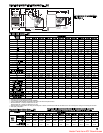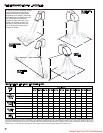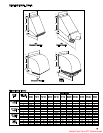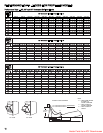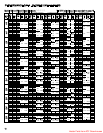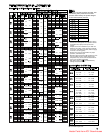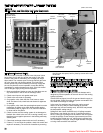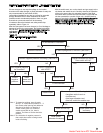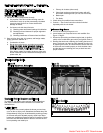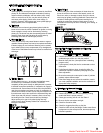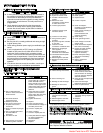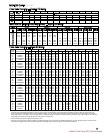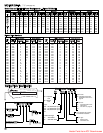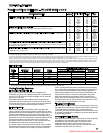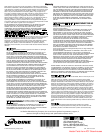
23
2. Yellow Tipping
Yellow tipping of a normally blue flame is caused by insufficient
primary air, and indicated incomplete combustion producing
carbon monoxide, aldehydes, and free carbon (soot). A dirty
orifice or one that is out of line, can also reduce primary air
and cause yellow tipping. Check orifice, clean realign, or
replace if necessary. With propane gas, some yellow tipping is
always present, but is not objectionable.
3. Flashback
Flashback occurs when air-gas mixture ignites inside the
burner to burn near the orifice. Flashback on ignition or during
burner operation usually can be eliminated by reducing
primary air.The burner may also be operating below its rated
capacity. Check input rate and adjust to correct value by
increasing orifice size or manifold gas pressure.
4
. Wavering Flames
Drafts across burners may cause flames to waver or appear
unstable.Wavering flames can lead to incomplete combustion
if flames impinge on cool surfaces.Wavering can be caused
by air drafts into the burner compartment or by misalignment
of the burner. Draft-blown flames may indicate a cracked heat
exchanger.
5. Floating Flames
Floating flames are long – do not have well-defined cones,
roll around in the combustion chamber, sometimes
completely off the ports. Usually an aldehyde odor is present
to indicate incomplete combustion. If combustion air supply is
reduced too far, burner flames will float. Often the pilot flame
near the port smothers and goes out. Lack of combustion air
causes burner flames to float.The unit may be overfired so its
flue outlet area may be too small for the increased firing rate.
Check input rate and reduce if necessary. Soot or dust may
be blocking the flue. Check flue and clear any blockage.
Adjust primary air to get rid of yellow tipping that may
produce soot to block flueways. Make sure combustion air
inlets are not blocked.
6. Flame Rollout
Flames rolling out of the combustion air inlets when the
burner is turned on can create a fire hazard, scorch unit
finish, burn wires, or damage controls. Gas in the burner
mixer may be ignited, producing flashback. Flame rollout is a
variation of floating flames, with flames reaching for air
outside the combustion chamber.Basic cause is lack of
combustion air that may be due to overfiring, poor venting, or
flue blockage.
Standing Pilot Problem Symptoms and Diagnosis
1. If pilot does not light:
POSSIBLE CAUSES AND REMEDIES
1a. Check that manual gas control (knob or lever) on
combination gas control is in the pilot position.
1b. Bleed air from pilot line. (Use special care in bleeding
propane units.)
1c. If pilot sputters, check pilot line for condensate or other
obstruction.
1d. If pilot flame is feeble or short, check pilot orifice for
cleanliness. Replace if necessary. See page 9 for pilot
flame adjustment.
1e. Be sure thermocouple contact point is clean. If problem
persists, replace thermocouple.
1f. If the above steps do not correct the condition, consult
your local qualified installation and service contractor or
appropriate utility company.
2
. If standing pilot does not stay lit:
POSSIBLE CAUSES AND REMEDIES
2a. Check inlet pressure with all units operating, making
certain that there is proper pressure.
2b. Check pipe or tubing size to unit. See Table 2.
2c. Be sure all pilot connections are tight.
2d. Check for excessive drafts.
2e. Check for clogged pilot orifice or pilot line.
2f. Check for leaks around pilot fittings. If leaks cause flame
impingement on thermocouple lead, thermocouple may
become inoperative.
TROUBLESHOOTING GUIDE
Figure 18
Wavering Flame or Misalignment
Figure 19
Floating Flame Condition
GOOD
BAD
Figure 20
Flame Rollout Appearance
Heater Parts from ACF Greenhouses



